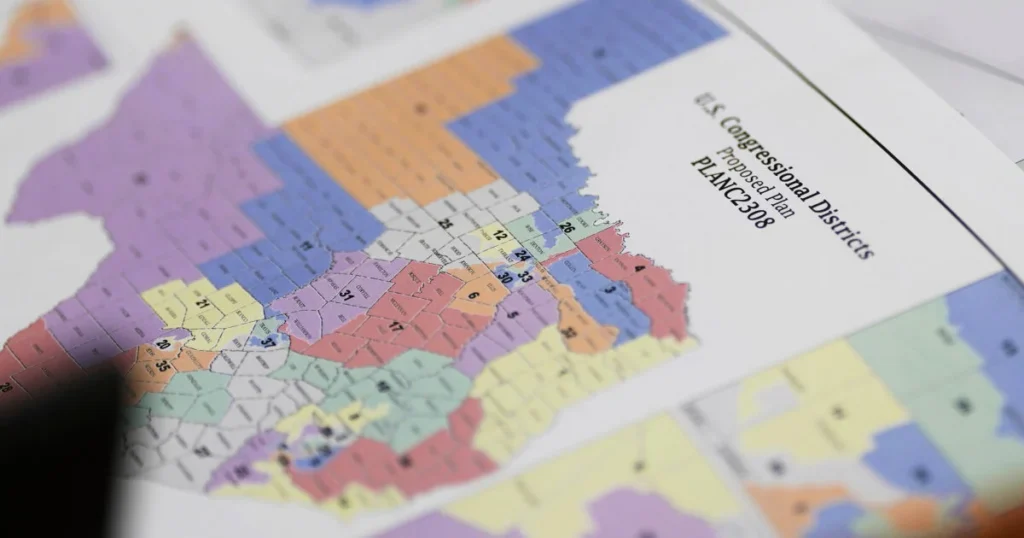California has entered a fierce political battle with Texas over congressional maps, raising questions about gerrymandering and midterm election strategies. The architect behind California’s redistricting plans says he never expected the states to clash at this level.
Redistricting expert Paul Mitchell from Redistricting Partners explained that California’s efforts partly began as a response to Texas. “It was kind of a bluff, and there has been a lot of reporting since Prop 50 started that the real reason was to push back on Texas and get them to stand down on their redistricting,” Mitchell said.
Texas, however, was not bluffing. Under pressure from former President Trump, the state created five new Republican congressional districts through gerrymandering. Mitchell, who usually focuses on nonpartisan map drawing, was given a clear directive in California: redraw five districts to counteract Texas’ Republican advantage.
“These midterm redistricting efforts are really unprecedented. The scale is unprecedented, and the fact that the White House is driving them is also unprecedented,” Mitchell added.
California’s Prop 50, now subject to voter approval, has already drawn reactions from key political figures. Congressman Darrell Issa, a targeted Republican from the 48th District, told reporters he plans to campaign vigorously. “I’ll run wherever I live. I’ve always done that, and I’ll run for reelection, leaving it to voters to decide if I’m the right person,” Issa said.
Mitchell noted that while he could theoretically redraw California maps to favor Democrats across the state’s 52 congressional seats, his current orders focus on just five districts, specifically to offset Texas.
“To draw a map aimed at pushing back on Texas is new for me. I’ve never been in this position, though as a professional, you know how it’s done and can execute it,” he said.
Political analysts say this clash marks a new era in U.S. election strategy, where states may actively respond to each other’s redistricting moves. Historically, gerrymandering has been a tool used over generations, but direct retaliation between states is rare.
Mitchell’s role highlights the growing influence of redistricting professionals in shaping political outcomes. Traditionally seen as technical experts, map architects now face pressure from political leaders and the White House to create strategic advantages.
California’s midterm redistricting effort could have wide-ranging consequences for the House of Representatives. By strategically adjusting five key districts, the state aims to neutralize the Republican gains secured in Texas. Observers say this could reshape competitive districts nationwide and set a precedent for state-level retaliation in redistricting battles.
Lawmakers and voters alike are closely monitoring these developments. While California’s Prop 50 will ultimately be decided at the ballot box, the process demonstrates how redistricting has evolved from a local administrative task into a high-stakes political maneuver.
Experts suggest that the increased visibility of redistricting battles may encourage more transparency in the process. As more states consider responding to perceived political advantages in other regions, the role of nonpartisan professionals like Mitchell will become even more critical.
Mitchell emphasizes the unusual nature of his assignment. “Normally, my goal is fairness and nonpartisanship. But in this case, the goal is clear: adjust five districts to counter Texas. It’s a rare situation, but one any professional in this field can handle,” he said.
The California-Texas redistricting confrontation illustrates the evolving strategies in U.S. politics. With both states actively shaping maps to influence midterm outcomes, voters will play a crucial role in determining which strategies succeed.

